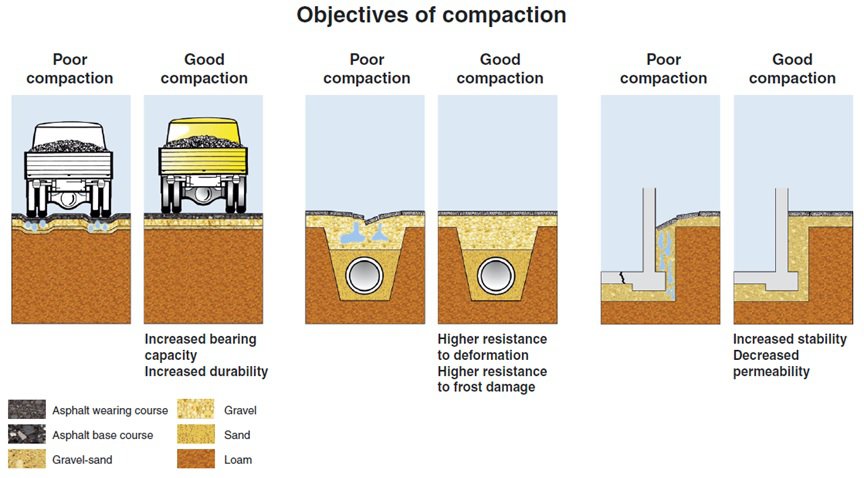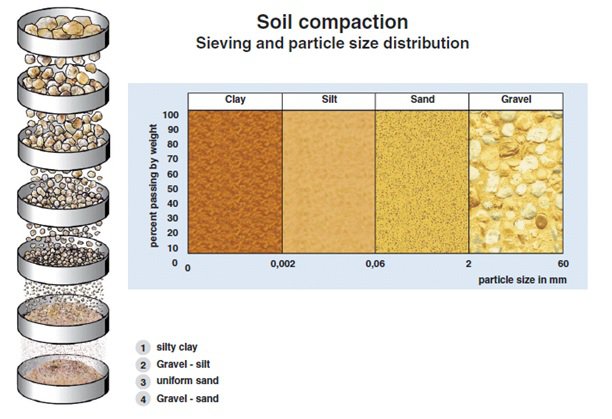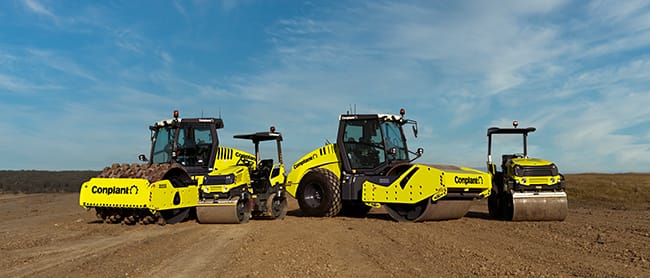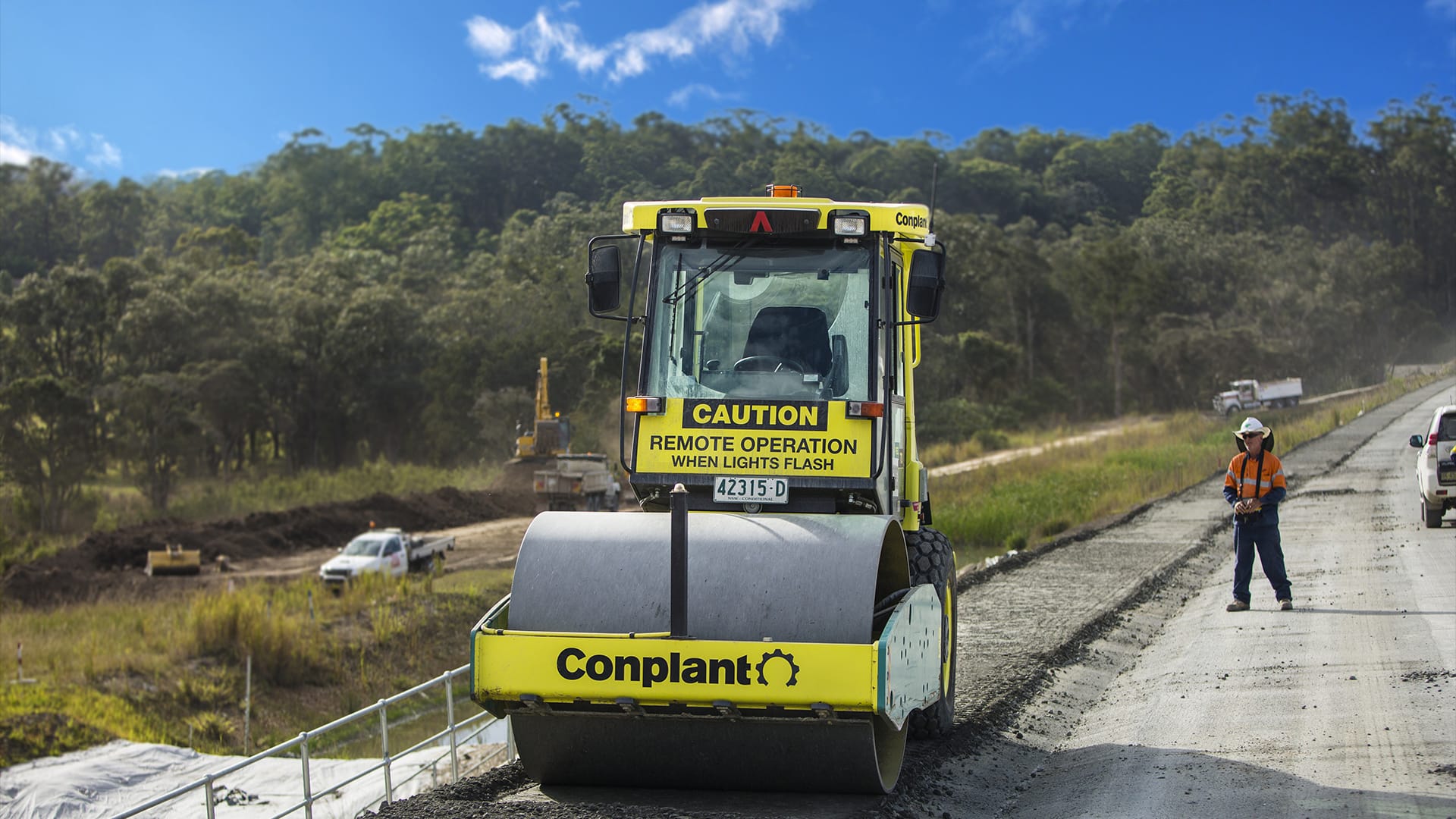When recommending the best compaction rollers for driveways, road repair and landscaping, unfortunately there’s no ‘one size fits all’ answer.
However, there are clear basic compaction principles you can apply to any particular application to help point you in the right direction.
We’ve been in the compaction business for more than 60 years, so we know a thing or two about getting it right the first time. There are a few questions we ask our customers to determine the right kind of compaction roller for their job, which we’ll share with you below.
But first, let’s talk about compaction more generally.
What happens when you get it wrong?
Compaction isn’t as simple as just flattening the ground and moving on. Using the wrong roller or compacting incorrectly impacts the project’s integrity and appearance, and can reduce the value of a property over time.
Typical signs of not using the best compaction rollers for the specific application could include:
- Cracked pavement structures
- Damage to concrete steps in landscaping
- Unwanted puddles
- Unlevel Settlement and cracking in concrete paths and driveways
- Rainwater running in the wrong direction after heavy downpours

What to consider when selecting the best compaction rollers for your job
When selecting the best compaction rollers for driveways, road repairs and landscaping there are several things to consider including the type and size of the project, the material being compacted and if there are any restrictions such as confined spaces or height or access limitations.
Other important areas to consider include the thickness of the layers to be compacted (better known as lifts), the desired finish, moisture content of material and any safety concerns such as gradeability or working near embankments, powerlines or any other services and perhaps most importantly the budget and available time to complete the project.
Let’s look at these questions in a bit more detail.
What type of material will you be compacting?
The selection of the best compaction roller for driveways, road repairs and landscaping will all vary based on the material being compacted.
When compaction is used in landscaping it is generally compacting heavier clay like soils or loam – these are known as non-granular cohesive soils. This varies greatly from driveways and road repair where hot mix asphalt (HMA), gravels or a cement treated base (CTB) is predominantly used – these are known as granular or non-cohesive materials.
Smooth drum rollers are effective on gravel, sand and granular soils and are generally used in the final compaction steps to “cap” and help provide a smooth surface either as a static roller or with vibration.
Upright rammers, padfoot rollers and trench rollers work well on soils that are more cohesive. This is because they use vibration to break the natural bonds or also know as “resonant frequency” between the soil particles which helps form a solid base during the compaction process.
As a rule, plate compactors, tandem smooth drum rollers, single smooth drum rollers, multi tyre rollers, static three-point rollers and combination rollers are good for:
- Gravel
- Sand
- Asphalt (HMA)
- Rockfill
- Sandy silt clay (in some situations)
Whereas padfoot rollers are good for:
- Clay
- Sandy silt
- Silt
- Loam
- Some sandy silt mixes with gravel

How big is the area you’re compacting?
The size of the area you are compacting will play a role in deciding the best compaction roller for your job. The width of the drum (on a roller) or base of the plate (on a plate compactor) can vary from 40cm to over 2m in width.
If the road repair job is just a small patch, a plate compactor will be more than suitable. However, with bigger jobs comes greater requirements.
Larger 2 or 3-tonne tandem rollers will be suitable for small DIY to medium-sized jobs, whilst large-scale projects such as long driveways or patch repairs up to 20m in length will need a larger roller – for example, a 10-tonne tandem roller with a larger rolling width.
A plate compactor is a great tool for finishing landscape projects or repairing driveways; however the selection depends on the size of the job and or depth of material that needs to be compacted. Plate compactors and upright rammers are suitable for small landscaping jobs, whilst 3-tonne padfoot rollers with back filling and levelling blades may be required in certain situations.
If the project is large and there are no access issues, large single-drum smooth drum or padfoot rollers with a rolling width over 2m can be brought in to knock the job over quicker without fuss.

Mistakes to avoid when choosing the best compaction roller
An area that needs to be considered when selecting the best roller is two common mistakes with compaction: over-compaction and under-compaction.
If the roller selected is too heavy or is used for too long, over-compaction is a real problem. Over-compaction causes the material being compacted to break down too far which reduces its support capability. The separation that occurs within the soil mix weakens the ground and changes the composition of the material.
Under-compaction could be caused by high levels of moisture content in the material, compaction equipment that is not large or heavy enough to do the job, the operator not making enough passes over the area or the material being placed in lifts thicker than the compaction equipment can handle. This will result in uneven settlement over time.
So when you think about choosing the right equipment for a driveway, road repair or landscaping application, there are many things to consider:
- Size of the project
- Amount of time available for completion (number of passes required)
- Material being compacted
- Moisture content of material
- Project restrictions such as height, width or access
- Layer/lift thickness
- If vibration is required
- Desired finish
- Safety or environmental concerns
Use this checklist to guide your decision and you’ll be on your way to getting the job done right, first time.
Need advice picking the perfect roller for your next job? With decades of experience, and more than 1000 rollers in our hire fleet, we’re sure to have the right solution for you. Get in touch today.



